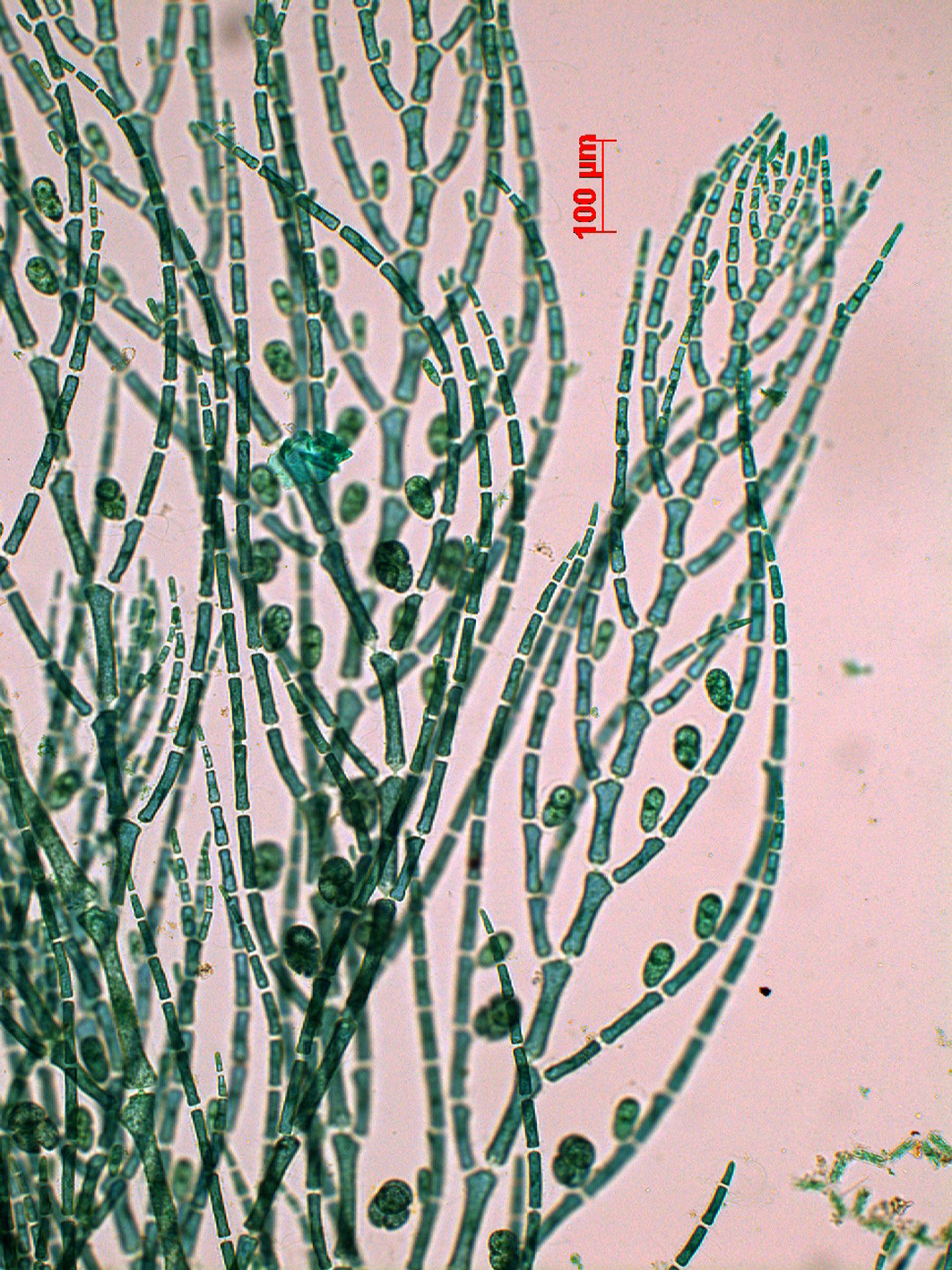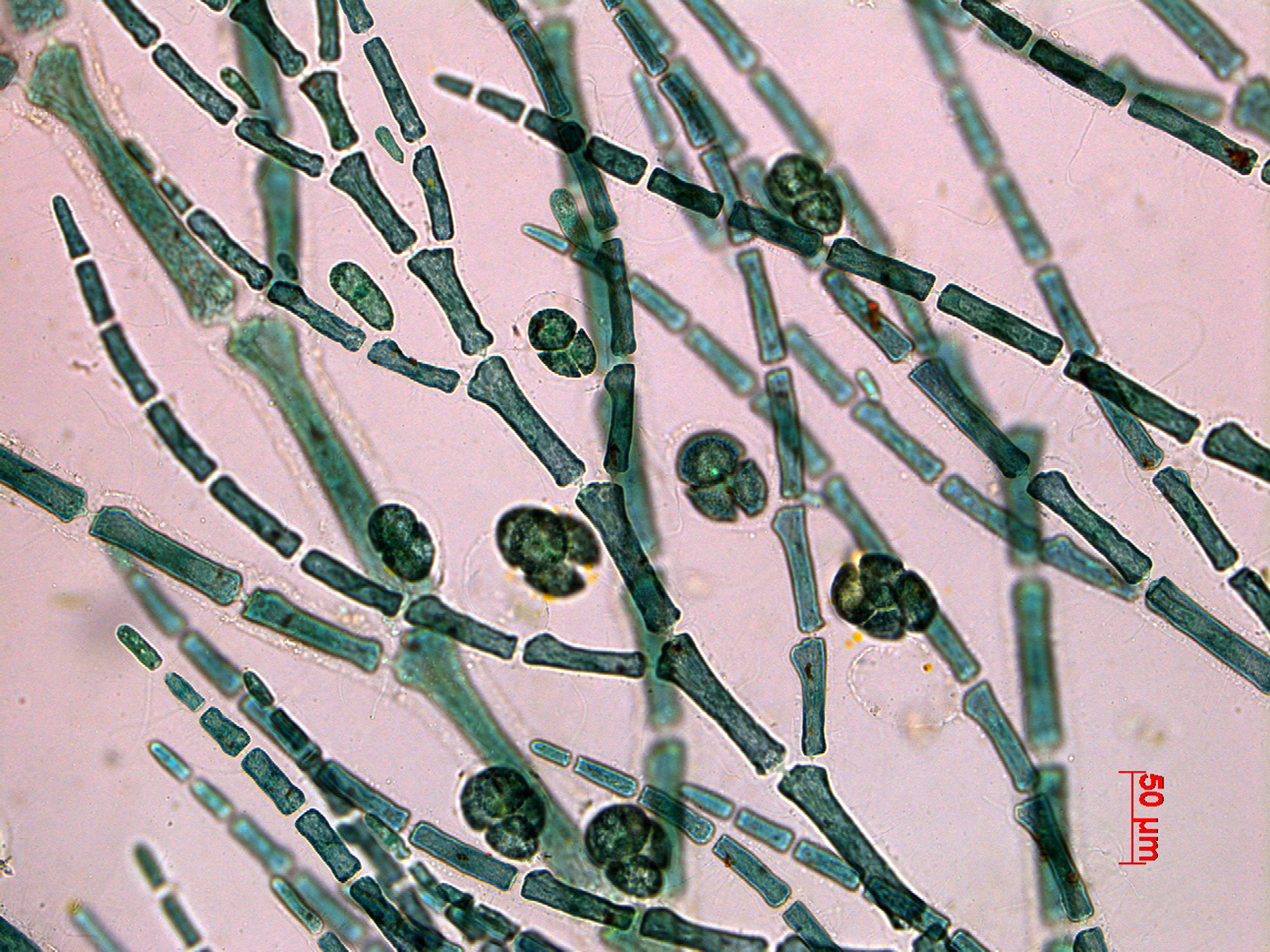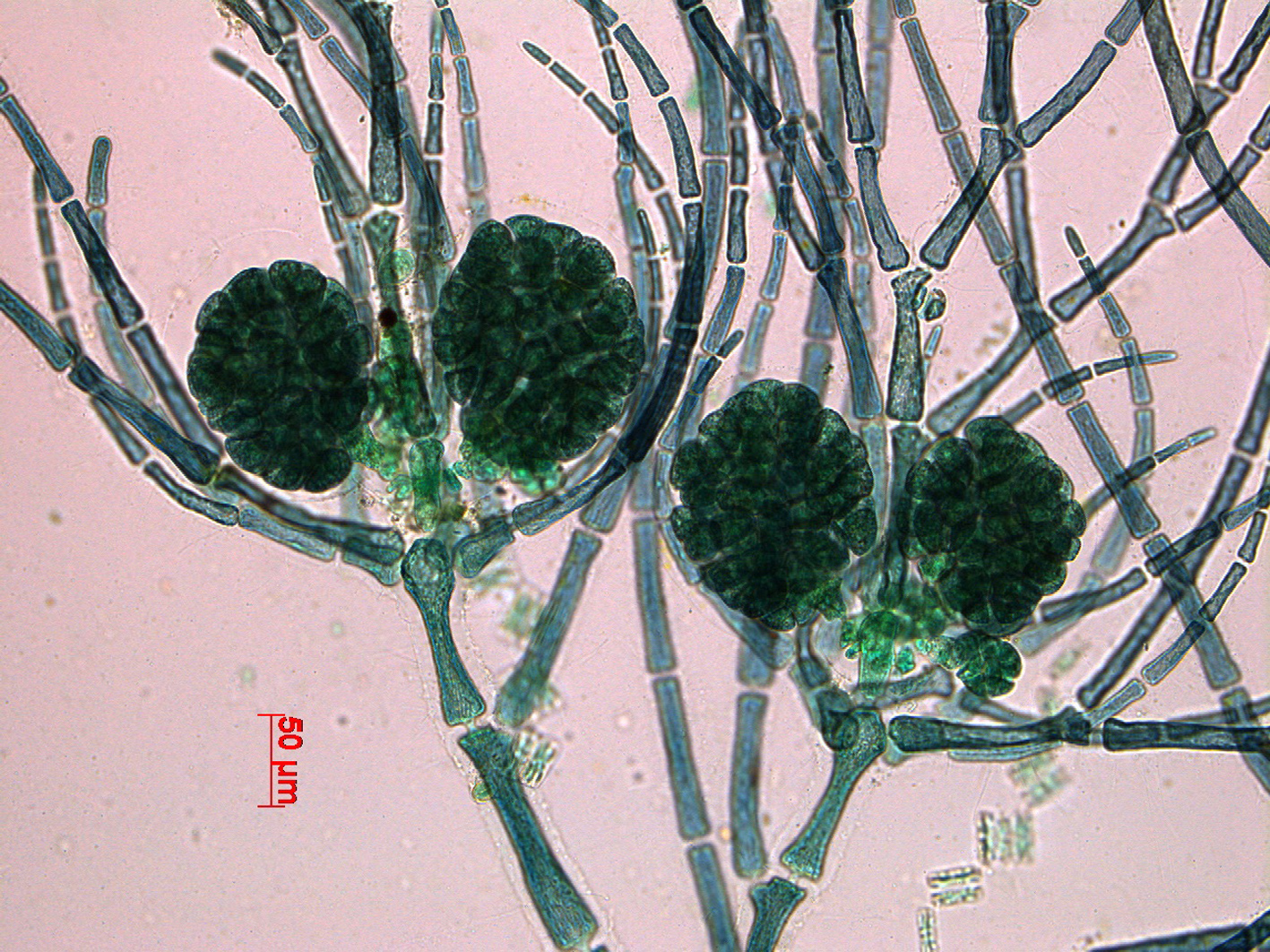Seaweeds of the South African South Coast


Order Ceramiales
Family Callithamniaceae
Callithamnion sp 2
Plants up to 3(-5) cm tall, regularly branched in one plane, rather open. Laterals occasionally branched from the first cell, but usually higher up. Apical cells ca. 10 µm in diameter, main axes to 100 µm in diameter, and the cells 3-4 times as long as broad, the axes without a regular cortication. Tetrasporangia borne singly or in short rows on the basal parts of laterals, strictly one per cell, measuring up to 65-70 Xx55 µm, tetrahedrally divided. Spermatangial stichidia one to four in a straight row per cell, the whole structure measuring ca. 75-100 µm long and 25 µm high. Carposporophytes prominent, consisting of two to four gonimoblasts; ripe gonimoblasts round, measuring ca. 250 µm in diameter. Ripe carpospores angular, ca. 35 µm in diameter. Carposporophytes with generally three involucral filaments developed from the cell below the one carrying the carpogonial filament and subsequently the gonimolobes. Involucre loose-filamentous, continuing growth and apparently capable of forming new carpogonial filaments.
Collections, ecology and regional distribution
Apparently limited to a few estuarine environments (Knysna, Kowie: 30-39?) and capable of withstanding low salinity.

Callithamnion sp. 2, tetrasporophyte, Kowie (stained slide).

Callithamnion sp. 2, detail of tetrasporophyte, Kowie (stained slide).

Callithamnion sp. 2, carposporophyte, Kowie (stained slide).
Cite this record as:
Anderson RJ, Stegenga H, Bolton JJ. 2016. Seaweeds of the South African South Coast.
World Wide Web electronic publication, University of Cape Town, http://southafrseaweeds.uct.ac.za; Accessed on 04 December 2025.